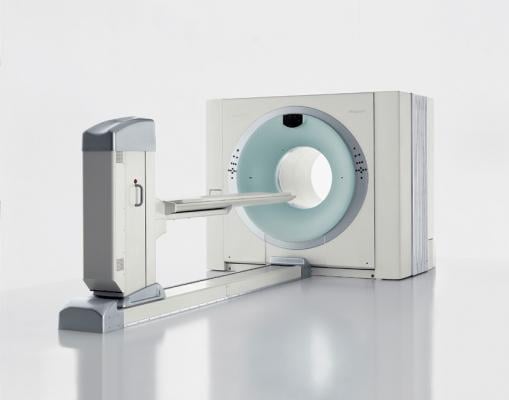
March 16, 2016 — For patients treated with definitive radiation therapy (RT) for oropharyngeal cancer caused by human papillomavirus (HPV), the majority of recurrences can be detected by post-treatment imaging at three months and physical exams during the six months following treatment. These conclusions were drawn from research presented at the 2016 Multidisciplinary Head and Neck Cancer Symposium, Feb. 18-20 in Scottsdale, Ariz.
The number of oropharyngeal squamous cell carcinoma (OPSCC) cases associated with HPV has climbed “dramatically” in the past several decades, according to the American Cancer Society, and survival rates following definitive RT have risen as well. As the number of oropharyngeal cancer patients and survivors grows, so does the need to determine general time to recurrence and the most effective modes of recurrence detection, to guide standards for optimal follow-up care by oncology teams.
To examine patterns in recurrence detection, researchers in this IRB-approved study examined all 246 cases of HPV- or p16-positive non-metastatic OPSCC treated with definitive RT at a single, large-volume cancer center between 2006 and 2014. Most patients received RT and a concurrent systemic therapy (n = 209, 84.6 percent); fewer patients received definitive RT alone (n = 38, 15.4 percent).
For follow-up care, patients received a positron emission tomography/computed tomography (PET/CT) scan three months after completing treatment, as well as physical exams every three months in the first year following treatment, every four months in the second year and every six months in years three through five. Median follow-up care length for all patients was 36 months. Patient outcomes, including recurrence and survival rates, were calculated using the Kaplan-Meier method from the end of RT.
Most recurrences were detected either by persistent disease appearing on three-month post-treatment imaging or by patients presenting with symptoms at follow-up exams. All six local failures were detected by direct visualization or flexible laryngoscopy in physical exams. Eight of the nine regional recurrences (89 percent), 12 of the 13 locoregional failures (92 percent), and 15 of the 21 distant recurrences (71 percent) were found due to symptoms or a PET/CT scan three months following treatment.
Findings also indicated that some disease characteristics increase the likelihood of recurrence. Both regional and distant failure were more common among patients who presented with five or more nodes or who had level four lymph nodes (p < 0.05). Risk of developing distant metastases also was greater in patients with a lymph node larger than six centimeters or with bilateral lymphadenopathy (p < 0.05).
“For most patients with HPV-associated oropharynx cancer, after a negative three-month PET scan, physical exams with history and direct visualization are sufficient to find recurrences,” said Jessica M. Frakes, M.D., an assistant member of the Department of Radiation Oncology at the H. Lee Moffitt Cancer Center in Tampa and lead author on the study. “Minimizing the number of unnecessary tests may alleviate the financial and emotional burden on these patients, including overall healthcare costs, time spent away from work and family, and the anxiety of waiting for scan results.”
In addition to examining patterns of recurrence and detection, this study lends support to the effectiveness of specialist teams in treating HPV-positive OPSCC with definitive RT. Within three years, local control was achieved in 97.8 percent of all patients in the study; regional control in 95.3 percent; locoregional control in 94 percent; and freedom from distant metastases in 91.4 percent. The three-year overall survival rate was 91 percent. Nine percent of patients experienced severe late toxicities, including 19 grade three toxicities and two grade four toxicities with resolution in the majority (76 percent, 16 of 21 toxicities) at the time of last follow-up. Sixty-four percent of toxicities and/or recurrences occurred within the first six months following treatment; only four events occurred more than two years following treatment.
“We were pleasantly surprised by the high cure rates and the low permanent side effect rates for these patients,” said Frakes. “These findings demonstrate that individuals with HPV-associated oropharyngeal cancer who are treated with definitive RT and cared for by multidisciplinary specialists have excellent outcomes.”
For more information: www.headandnecksymposium.org


 April 23, 2024
April 23, 2024 








